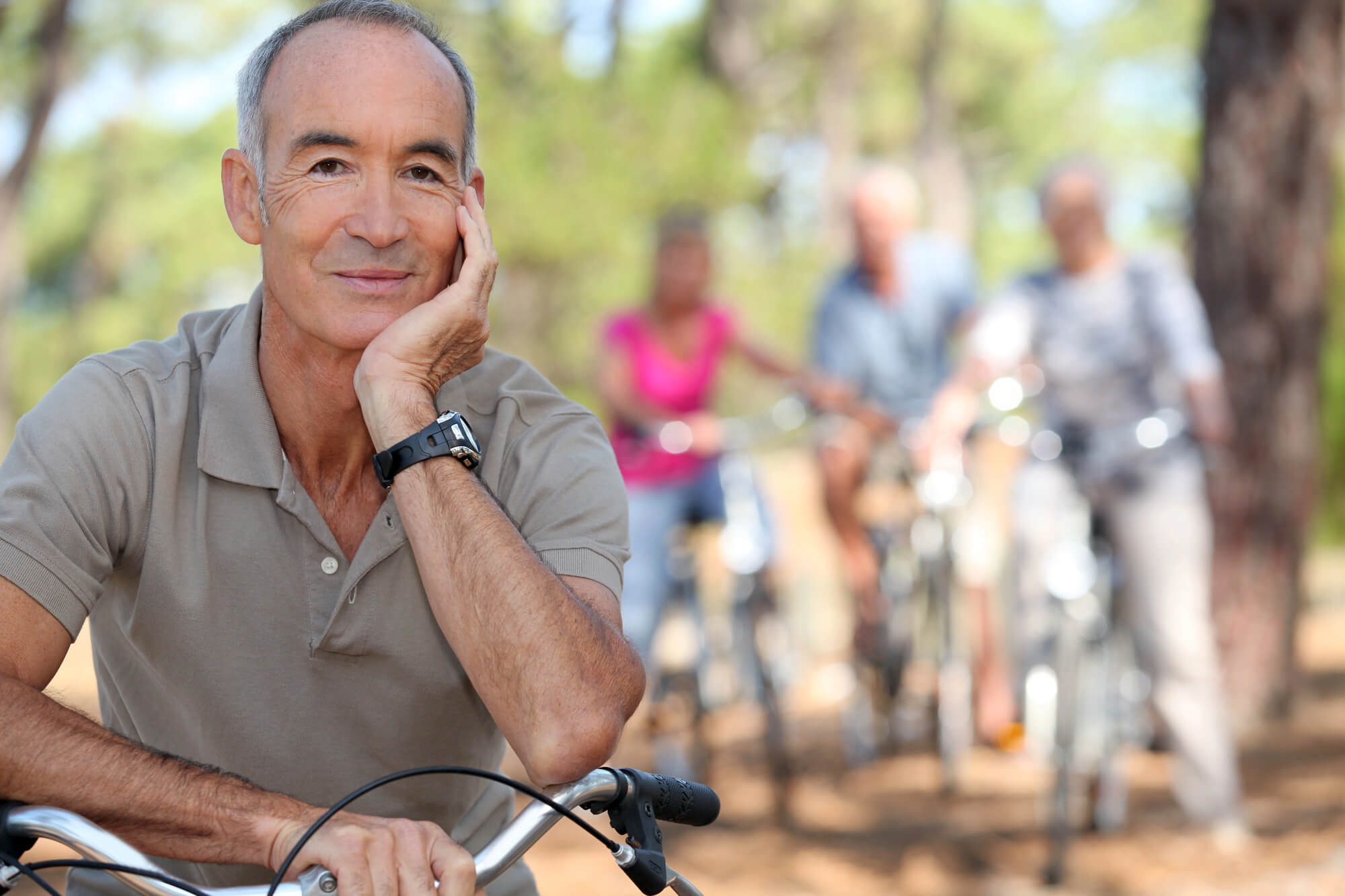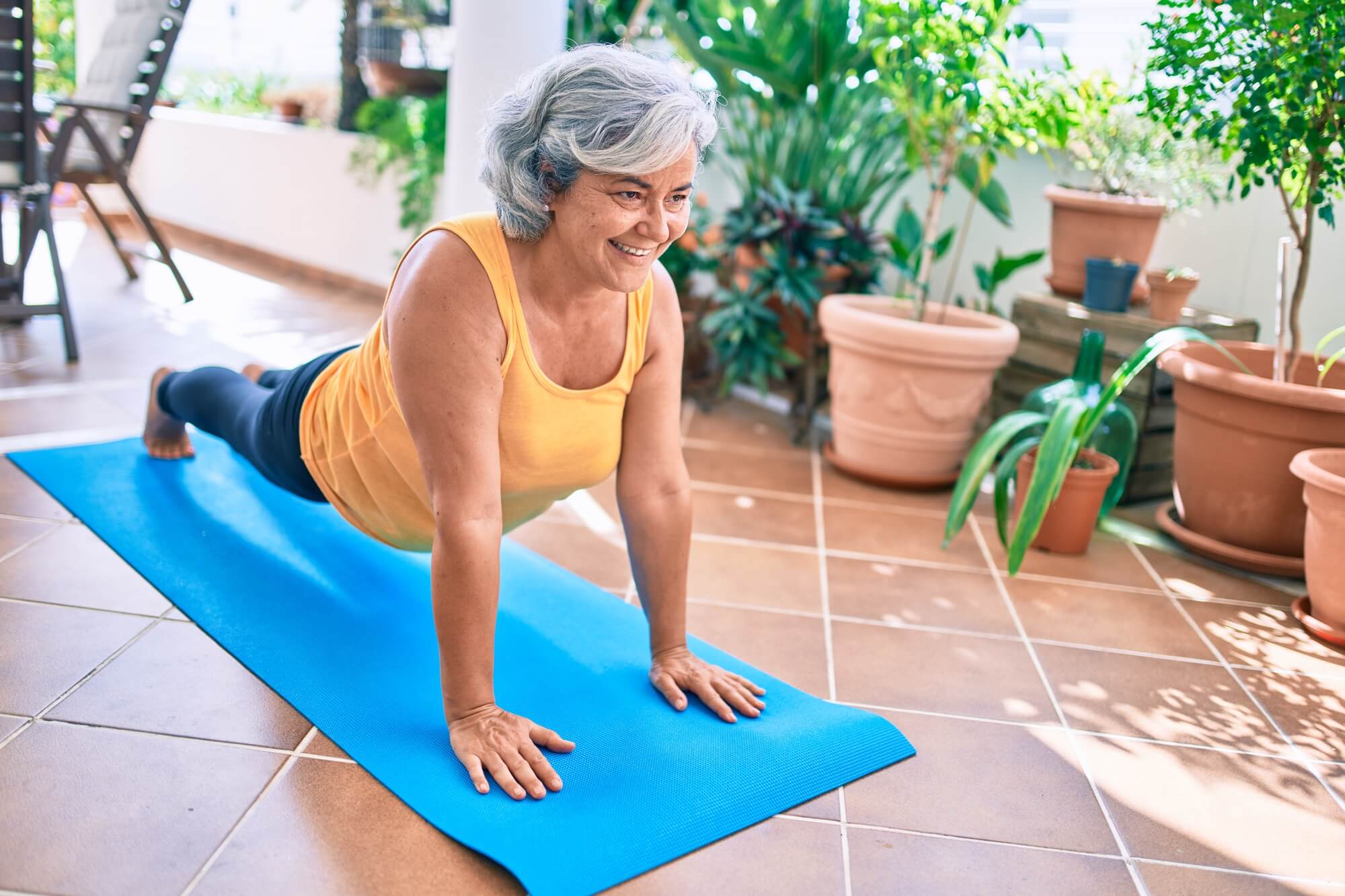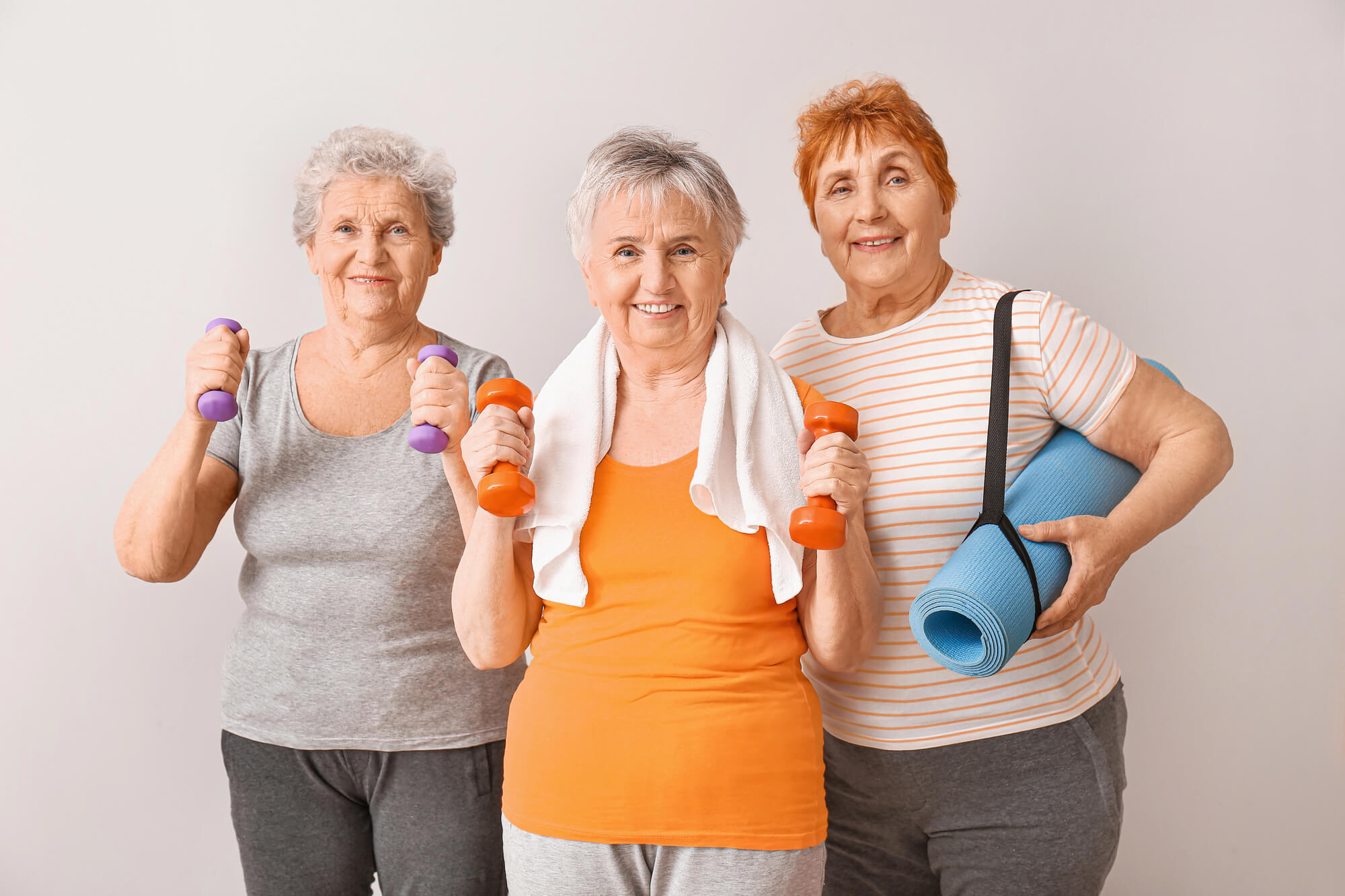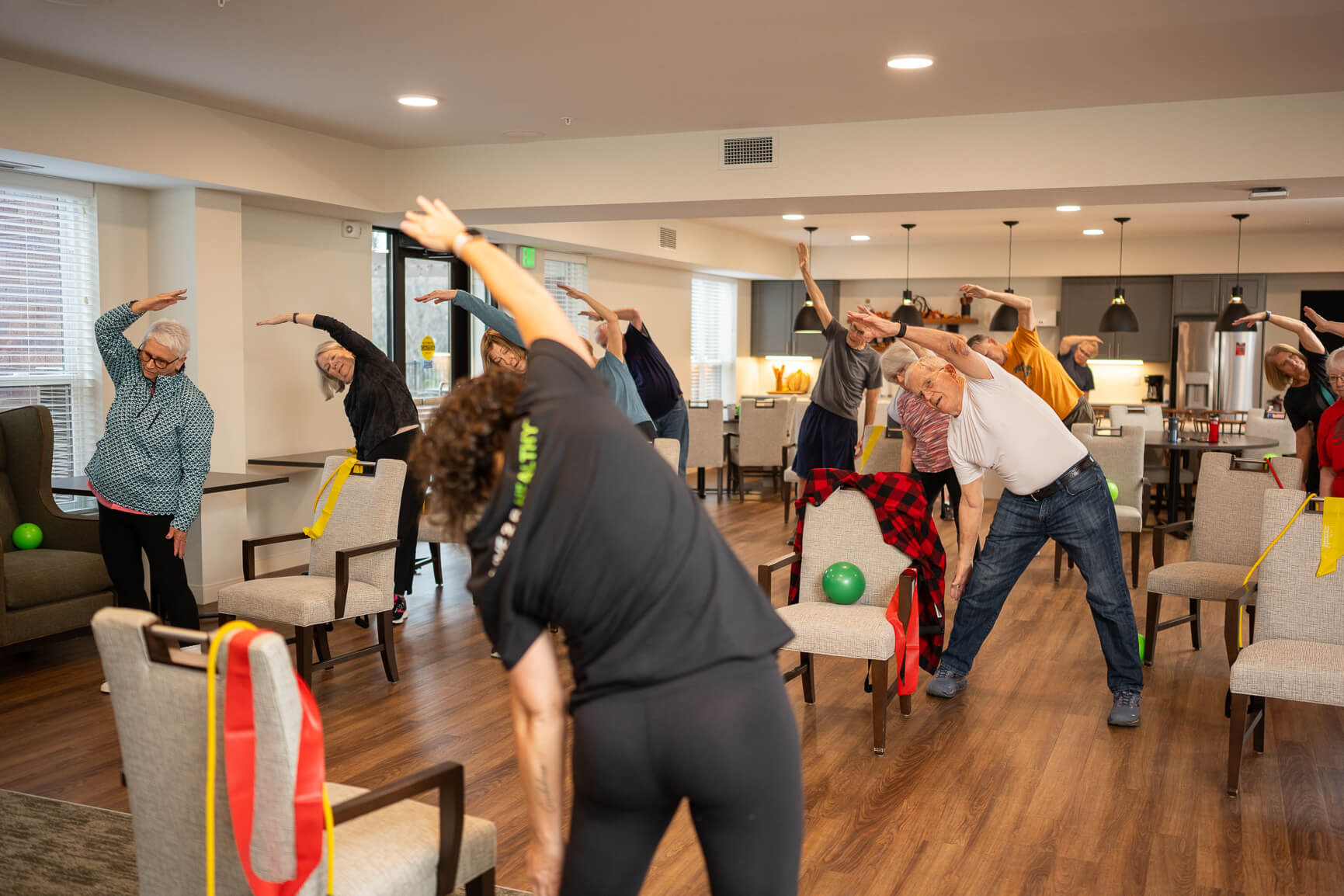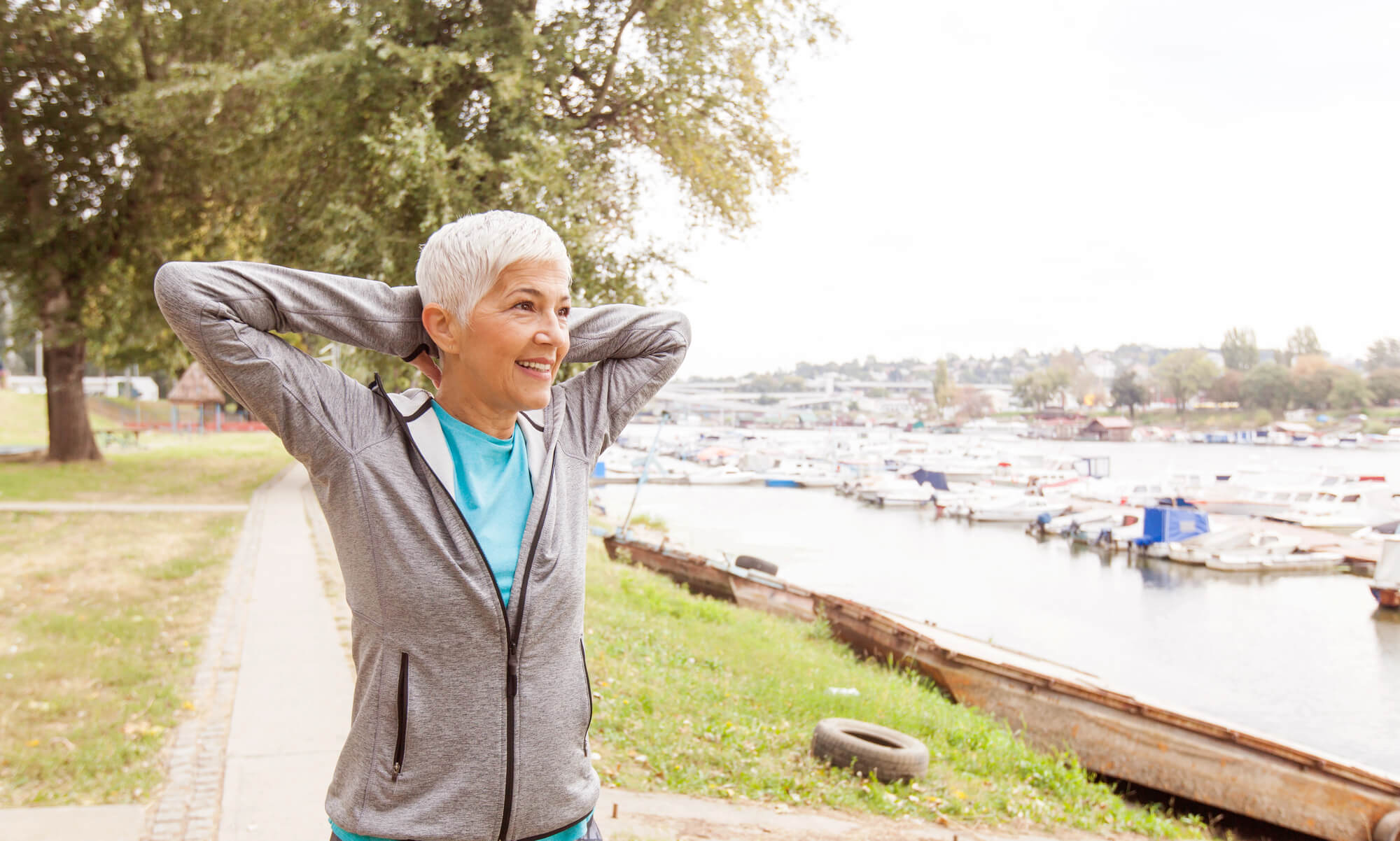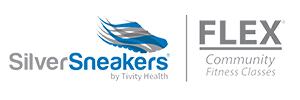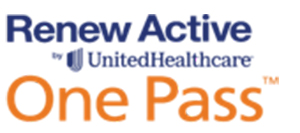Each April, we celebrate National Move More Month—a perfect time to recognize the importance of staying active for people of all ages. But for older adults, mobility and flexibility are especially crucial for maintaining independence, reducing the risk of injury, and improving overall well-being.
Originally called National Walking Day, the American Heart Association changed the name to broaden the types of physical activities that can be included in anyone’s daily routine.
And physical activity may look different later in life, as there are countless exercise options that provide significant health benefits—without the need for intense or complicated exercises.
We’ve put together a quick guide to highlight the importance of movement for seniors, recommend safe and effective types of exercise, and offer exercise tips to help make daily movement a part of your regular physical health routine.
Why Mobility and Flexibility Are Essential for Seniors
As we age, our fitness levels and activity recommendations shift. Instead of intense contact sports or extreme exercise routines, the focus turns to maintaining function, preventing falls, and improving physical and mental health as well as quality of life.
Here’s how mobility and flexibility help:
- Enhances balance and reduces risk of falls through improved muscle strength and better control.
- Supports independence in daily activities like bathing, dressing, and walking.
- Reduces joint stiffness, arthritis discomfort, and chronic pain.
- Improves posture and coordination, helping with body awareness and comfort.
- Boosts circulation, energy, cognitive function, and overall mood while supporting cardiovascular health.
Remember, it’s never too late to start an exercise routine—even small steps over a consistent period of time can lead to powerful results.
Simple Mobility and Flexibility Exercises for Seniors
Not sure where to start? These effective exercise routines can be done at home, in a group setting, or with an exercise partner, and they can be adapted to your unique needs and fitness goals. From balance exercises to brisk walks outdoors, there is plenty of light to moderate activities for seniors of any body type and health condition.
Gentle Stretching
Stretching increases flexibility and helps relieve sore muscles, body aches, tension, and other chronic conditions. It’s a type of regular exercise that every person should include in their daily lives, no matter their age.
- Try neck rolls, shoulder shrugs, or overhead arm stretches.
- Seated hamstring and calf stretches can loosen tight leg muscles.
Exercise tip: move slowly, hold each stretch for 10–30 seconds, and avoid bouncing.
For seniors, stretching is even more crucial, as it can give you the benefits of cardiovascular exercises (like improving heart rate and blood pressure) without the risk impact movement from activities like running.
Balance and Core Strengthening
Balance-improving activities help with coordination and reduce fall risk—key for bone health and disease prevention.
- Heel-to-toe walks along a wall or nearby trail.
- Standing leg lifts or side leg raises using a chair for support.
- Seated abdominal twists to engage core muscles and support body position.
Chair-Based Movement
Great for those with limited mobility, chair yoga and seated stretches can be surprisingly powerful.
- Try chair yoga poses or gentle movements like seated marches.
- Add light bodyweight exercises such as leg extensions for strength training.
- Excellent choice for older adults in community centers or sports leagues.
Light, Low-Impact Cardio
Even short bursts of movement can support heart health and fight off chronic diseases like cardiovascular disease, heart disease, and diabetes.
- Go for a short walk indoors or outdoors, or along a bike path.
- Try water aerobics or any form of moderate-intensity aerobic activity, especially if you suffer from neuropathic pain or joint stiffness.
- Tai chi improves balance and coordination and has major mental health benefits.
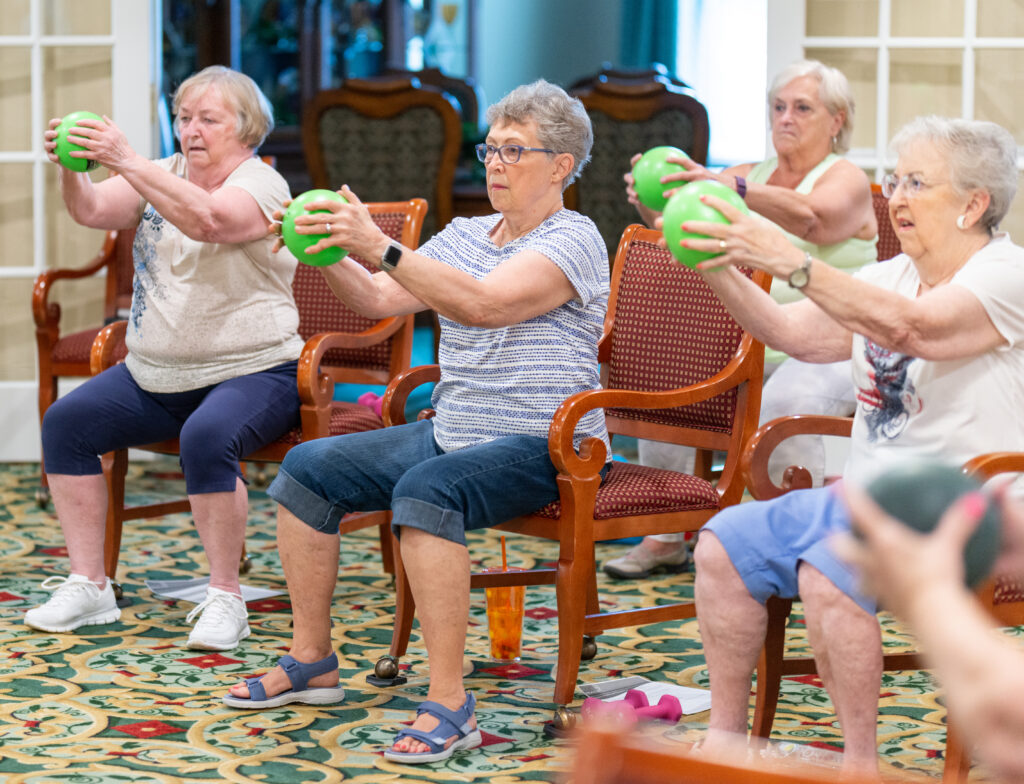
Safe and Effective Movement Tips
Before starting any new exercise program, keep these guidelines in mind to ensure a safe and enjoyable active and healthy aging:
- Start slow: Just 5–10 minutes a day of light activity can begin to improve your activity levels
- Support: Use support tools like sturdy chairs, resistance bands, or grab bars.
- Hydrate: Drink water regularly—bring a water bottle to all activities.
- Always stay vigilant: Check in with your healthcare providers, especially if you have a chronic pain condition, abdominal pain, or experience chest pain. Keep your body healthy by always monitoring it, especially as you increase the intensity of activity per week.
- Make exercise fun: join exercise classes, try a dance video, or join a community bike rally, or try a mix of activity types that together can keep your routine dynamic.
- Combine with healthy eating: Staying physically active is essential, but it’s only half of what we need to stay healthy at any stage in life, especially as we age. A balanced diet appropriate for our age and conditions will make our active lifestyle twice as likely to improve our quality of life.
How to Incorporate Movement Into Daily Life
Movement doesn’t have to be limited to exercise breaks—you can make regular activity part of your everyday life and routines:
- Stretch while watching TV, during commercial breaks, or after waking up
- Take short walks around the house or in your garden
- Turn chores like dusting, sweeping, or gardening into endurance activities
- Involve loved ones: host a family dance, go on a bike ride, or plan a baseball game with family members
- Use a community resources activity planner if you have access to one, or explore physical activity ideas and digital materials to create a customizable activity schedule.
Move More, Live Better
Celebrating National Move More Month is about more than just sports or gym memberships—it’s about moving your body in ways that support a healthy life, especially as we age. The benefits of exercise applies to everyone, whether you’re recovering from a mental illness, managing chronic diseases, or simply trying to maintain your healthy weight and feel more energized.
If you’re looking for a simple, supported way to get started with attainable goals and a customized weekly activity plan, you’re not alone.
Live 2 B Healthy® partners with senior living communities across the country to bring fitness programs designed specifically for older adults. These sessions focus on improving balance, strength, and flexibility in a fun, social setting—with safe guidance from certified trainers. Whether you’re trying to build a new exercise regimen or plan, build healthy habits, avoid physical symptoms, or just feel better in your body, Live 2 B Healthy is here to help. Contact us today to learn how your community can benefit from a Live 2 B Healthy fitness program and start celebrating National Move More Month in a healthy, happy way.

